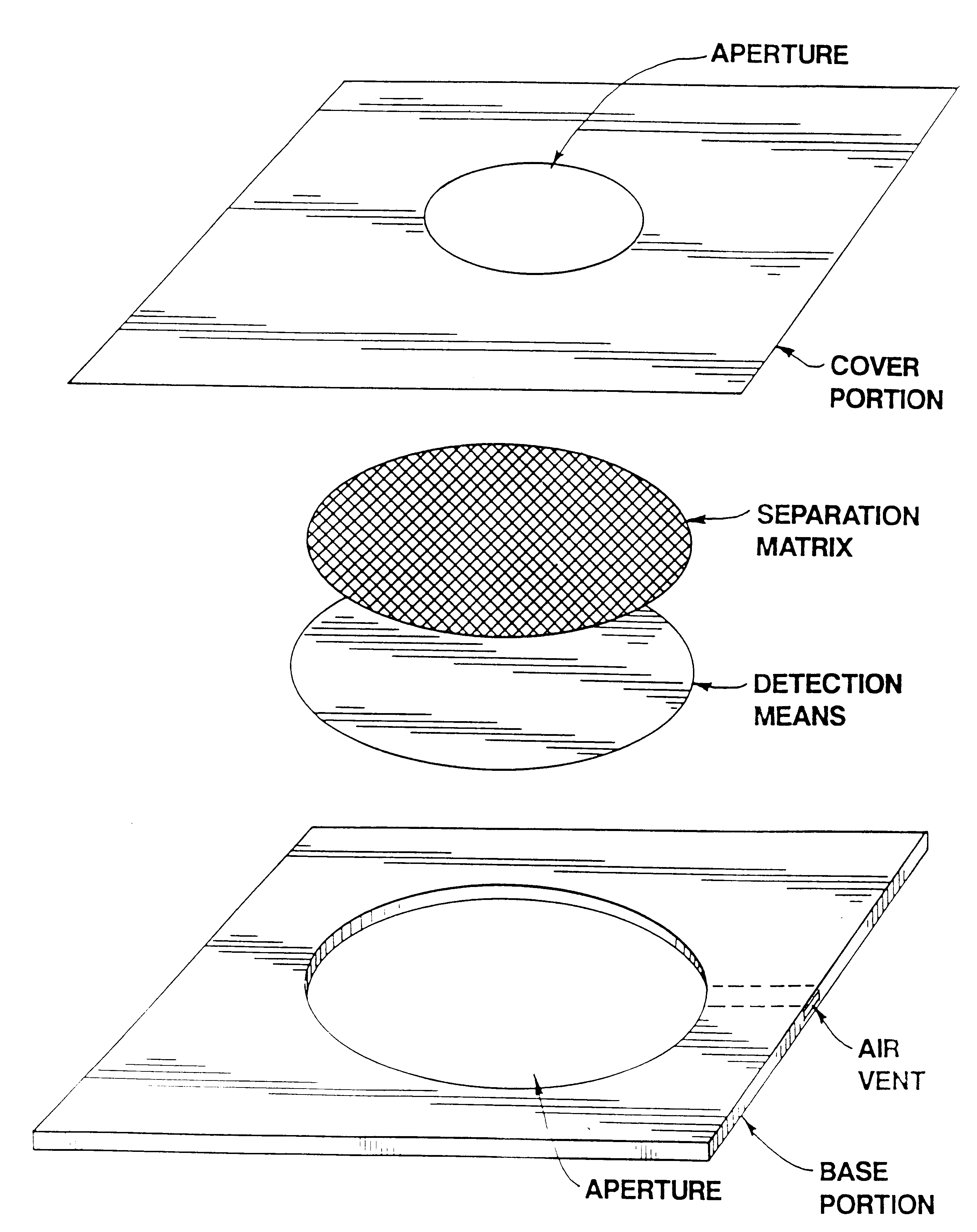Analyte detection device and process
- Summary
- Abstract
- Description
- Claims
- Application Information
AI Technical Summary
Problems solved by technology
Method used
Image
Examples
example 1
Construction of Analyte Detection Device
Multiple layers of thin plastic sheets and adhesive tape were used to construct the detection device. The overall thickness of the device was varied by using varying numbers of layers. Such various layers can be adhered to each other using a suitable adhesive. An exemplary and preferred adhesive is double-sided adhesive tape purchased from 3M. The layers of the device were constructed of high density polystyrene sheets (0.006" thick) purchased from American Can.
After adhering a desired number of plastic sheets together, holes were punched through the adhered layers to make a cavity for the separation and detection layers. A clear bottom layer (polycarbonate) was added, the detection and separation layers inserted and a top layer with application site was added to enclose the layers within the device. Polyethylene terephthalate can be used for the top and bottom layers. A schematic diagram of a detection device of the present invention is shown...
example 2
Effect of HEPES Buffer
A device was prepared as described in EXAMPLE 1 with the addition that a glass fiber filter, used as the separation layer, contained HEPES buffer, potato lectin and Cremophor EL. The glass fiber filter was impregnated with those substances by soaking the cut filters in an aqueous solution of 150 mM HEPES, pH 7.5, 57,600 Units / L potato lectin and 1.3 percent (w / w) Cremophor EL. After soaking, the fibers were removed from the solution and dried in an oven at 50.degree. C. for about 15 minutes.
A synthetic membrane fabricated of nylon (Biodyne A, 0.45 micron pore size, PALL Biosupport, Long, Island, N.Y.) was impregnated with ATP, NAD, hexokinase, glucose-6-phosphate (G-6-P) dehydrogenase, diaphorase and NBT (a tetrazolium salt, Sigma Chem. Co.) and employed as the detection layer. Impregnation was accomplished by soaking the synthetic membrane in an aqueous solution having the following final concentrations:
5.5% (w / w) Tetrazolium indicator (e.g. NBT)
1% (w / w) NAD
4....
example 3
Other Analytes
A detection device for other analytes can be prepared using the procedures set forth above. The following impregnation solutions are exemplary of solutions that can be used to impregnate detection matrices for use with the detection of cholesterol, triglyceride and amylase.
PUM
 Login to View More
Login to View More Abstract
Description
Claims
Application Information
 Login to View More
Login to View More - R&D
- Intellectual Property
- Life Sciences
- Materials
- Tech Scout
- Unparalleled Data Quality
- Higher Quality Content
- 60% Fewer Hallucinations
Browse by: Latest US Patents, China's latest patents, Technical Efficacy Thesaurus, Application Domain, Technology Topic, Popular Technical Reports.
© 2025 PatSnap. All rights reserved.Legal|Privacy policy|Modern Slavery Act Transparency Statement|Sitemap|About US| Contact US: help@patsnap.com



